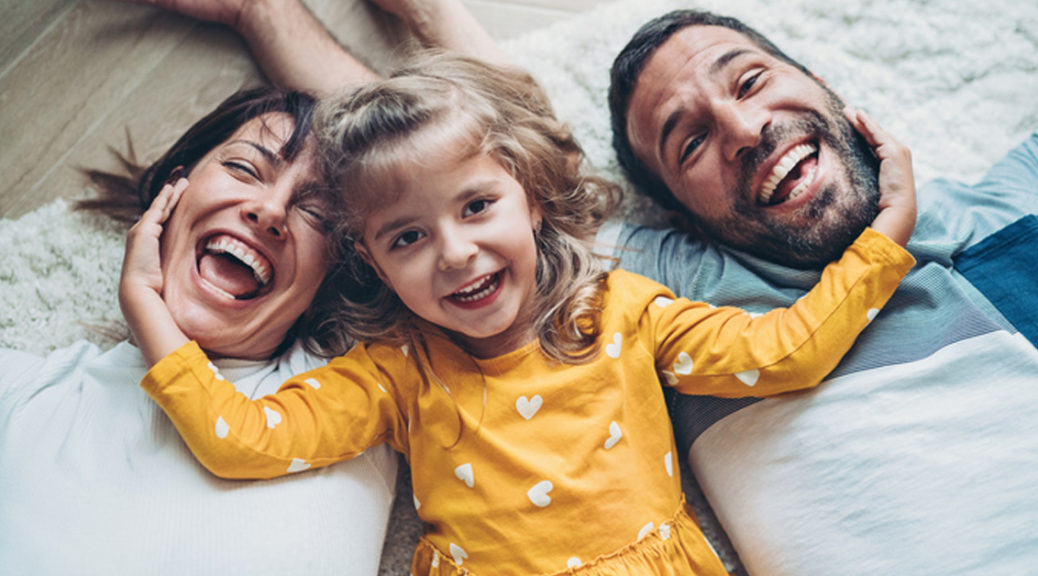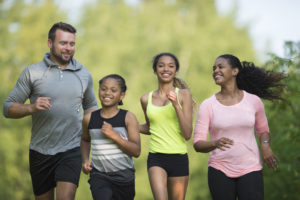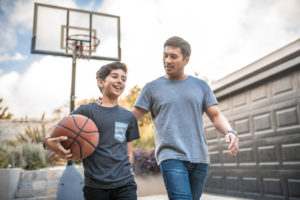How to Cope: Creating a Mental Health Toolkit

In the United States, 19% of adults experience an anxiety disorder in an average year, and over 30% experience an anxiety disorder at some point in their lives. Add to those numbers people who don’t have an officially-diagnosed disorder but experience times of heightened anxiety — and it’s easy to see that many of us want to learn how to cope amidst the chaos.

Chad Anderson
In other words, if you’ve ever struggled with anxiety, you’re not alone. Anxiety is one of the most common mental health disorders in both adults and children. But there are practical steps you can take to cope. KVC’s Chief Clinical Officer, Chad E. Anderson, shares how you can create a “Mental Health Coping Toolkit” of practices to help you and your children manage anxiety.
How to Fill Your Mental Health Coping Toolkit
For adults and teens, your “toolkit “can simply be a mental checklist. Or you can take the extra step to record it in a journal, a notes app on your phone or a sticky note that you place in a visible location. When anxiety creeps in, your toolkit is your go-to resource with actionable steps to minimize those anxious feelings.
As you mentally assemble its components, remember that your toolkit should include ways to address the need for relaxation and distraction. It’s also beneficial to add physical activities to that toolkit. This not only provides a distraction, but also encourages your body to produce chemicals like endorphins to help you relax.
For relaxation, Anderson recommends the Headspace app. This app is described as “meditation made simple,” and offers guided meditations and mindfulness exercises. Of course, Headspace isn’t the only app available for relaxation. You may find another relaxation app that appeals to you by completing a quick online search to find a variety of guided meditations.
 Another excellent relaxation tool to add to your toolkit is do-it-yourself music therapy. Pick music that makes you feel good. Create a go-to playlist of upbeat songs you love to sing along to, or find a station that plays soothing music to help set your mind at ease.
Another excellent relaxation tool to add to your toolkit is do-it-yourself music therapy. Pick music that makes you feel good. Create a go-to playlist of upbeat songs you love to sing along to, or find a station that plays soothing music to help set your mind at ease.
Next up in your toolkit: Add your favorite pastime activities for distraction. Include something easy, accessible and purely for enjoyment when you need to divert attention away from anxious thought patterns. Give yourself time to enjoy a game on your phone or pull out some playing cards for an old-school round of solitaire.
Another way to distract your mind is to focus on a future plan or project. For example, Anderson goes to Trip Advisor to dream up new vacation destinations and itineraries. You can browse Pinterest for new recipes, crafts or home decor projects. Or if you prefer to work with your hands, create a vision board from magazine cutouts. Make sure to select something that aligns with your personal hobbies and interests.
 Next up, add a few physical activities that you enjoy. There are many psychological benefits to exercise. Movement can help to improve your mood and relax you. Research also shows that engaging in outdoor activities can help reduce stress and anxiety, so take these activities outside whenever you can.
Next up, add a few physical activities that you enjoy. There are many psychological benefits to exercise. Movement can help to improve your mood and relax you. Research also shows that engaging in outdoor activities can help reduce stress and anxiety, so take these activities outside whenever you can.
Building a Coping Toolkit for Children
Younger children can benefit from having a physical box, bag or special spot to place items that will fill their coping toolkit. Anderson recommends that caregivers begin with a conversation about building that toolkit.
To brainstorm, grab a few notecards and have your child fill in the blanks: “When I feel _______, I will _______.” First, brainstorm the feelings — like feeling stressed, scared, worried or overwhelmed. Then, talk about some healthy, relaxing responses to each of them. For example, “When I feel stressed, I will go outside and ride my bike,” or “When I feel anxious, I will take 10 deep breaths.” Document their answers and drop the notecards into their “kit.”
Mental health coping toolkits for children should also include favorite items for distraction. Add a fidget spinner, small toys or a beloved stuffed animal to snuggle. A fun card game or a coloring book with colored pencils can also be an outlet to help quiet an anxious mind.

Just like adults and teens, physical play and activities work with both the distraction and relaxation goals Anderson recommends for the toolkit. Simply heading outdoors for imaginative play in the yard or visiting a local park can distract from anxiety and begin to relax the mind. If the weather won’t allow for outdoor physical play, try turning on some feel-good music for a little in-home dance party.
Have regular conversations with your child about fear and other big feelings they might experience while coping with their anxieties. It’s natural for them to feel sad and unsure at certain times, and you can help by acknowledging their feelings. When children have the tools they need to weather their storms, it’s empowering — and they can build resilience that will last them a lifetime.
Add a Mindfulness Practice
Everyone’s mental health coping toolkit should also include a mindfulness practice. There are many simple ways to incorporate mindfulness, and you can practice this anytime, anywhere. Several suggestions from the Mayo Clinic include:
- Pay attention. Take the time to experience what you are doing with all five of your senses: sight, touch, smell, taste and hearing. For example, take a moment to consider the feeling of the couch you’re sitting on, focus on the sounds in the background of your home or really see the trees you pass by on a commute to work. For example, when you take a bite of food, take time to smell, taste and truly enjoy it.
- Live in the moment. Try to intentionally bring open, accepting and discerning attention to everything you do. Finding joy in simple pleasures can be a great exercise in mindfulness.
- Accept yourself. Practice treating yourself the way you treat a good friend: with kindness. As you work on acceptance, remember to give yourself grace and patience.
- Focus on your breathing. When you have negative thoughts, try to sit down, take a deep breath and close your eyes. Focus on your breath as it moves in and out of your body. Sitting and breathing for even just one minute can help.
Try to have some fun building your mental health coping toolkit! Experiment with different options, and see what works best for your distraction and relaxation goals. Start small and build it as you go. You can also follow KVC Health Systems on Facebook, Twitter or Instagram for more updates and information. We’re here for you.





